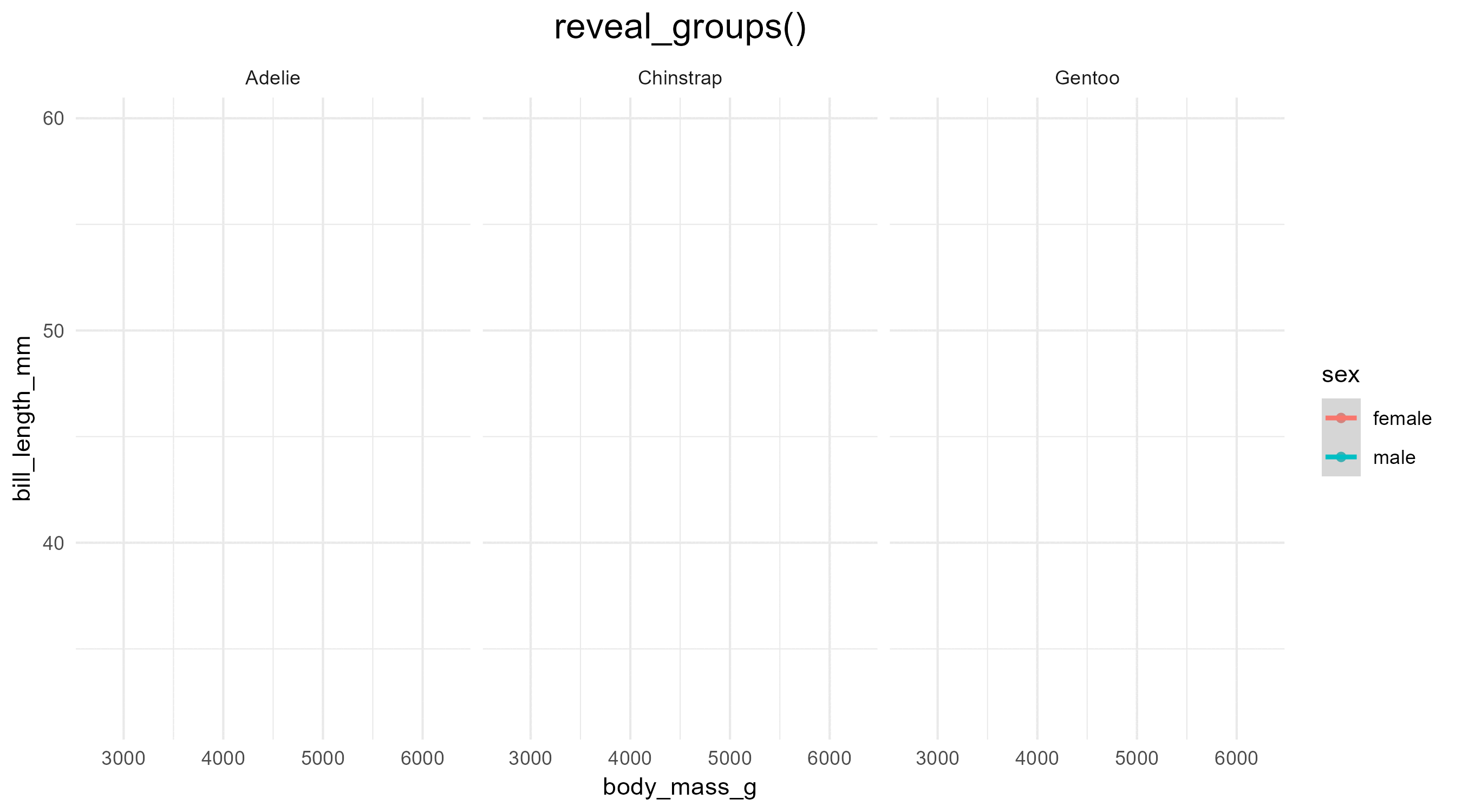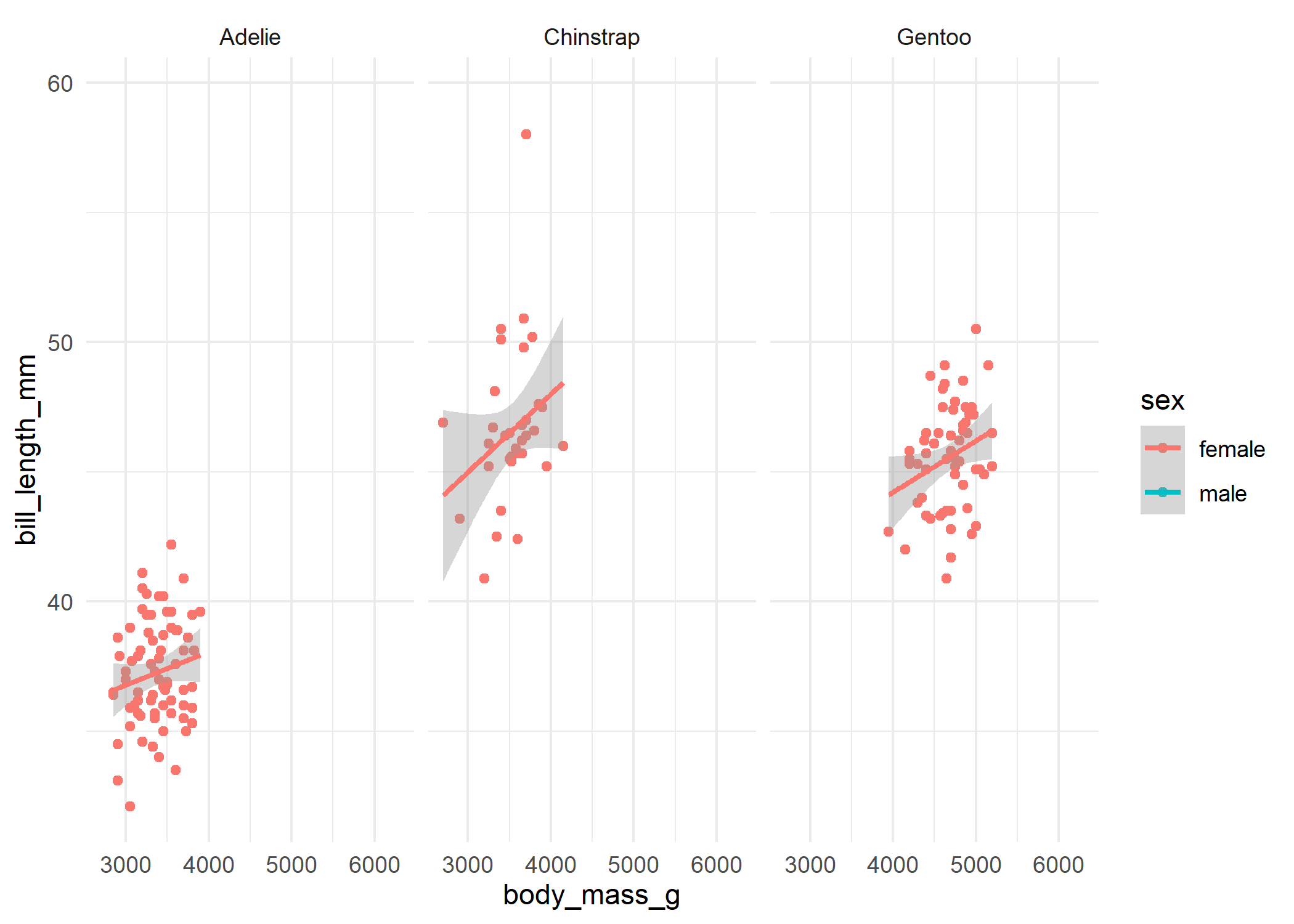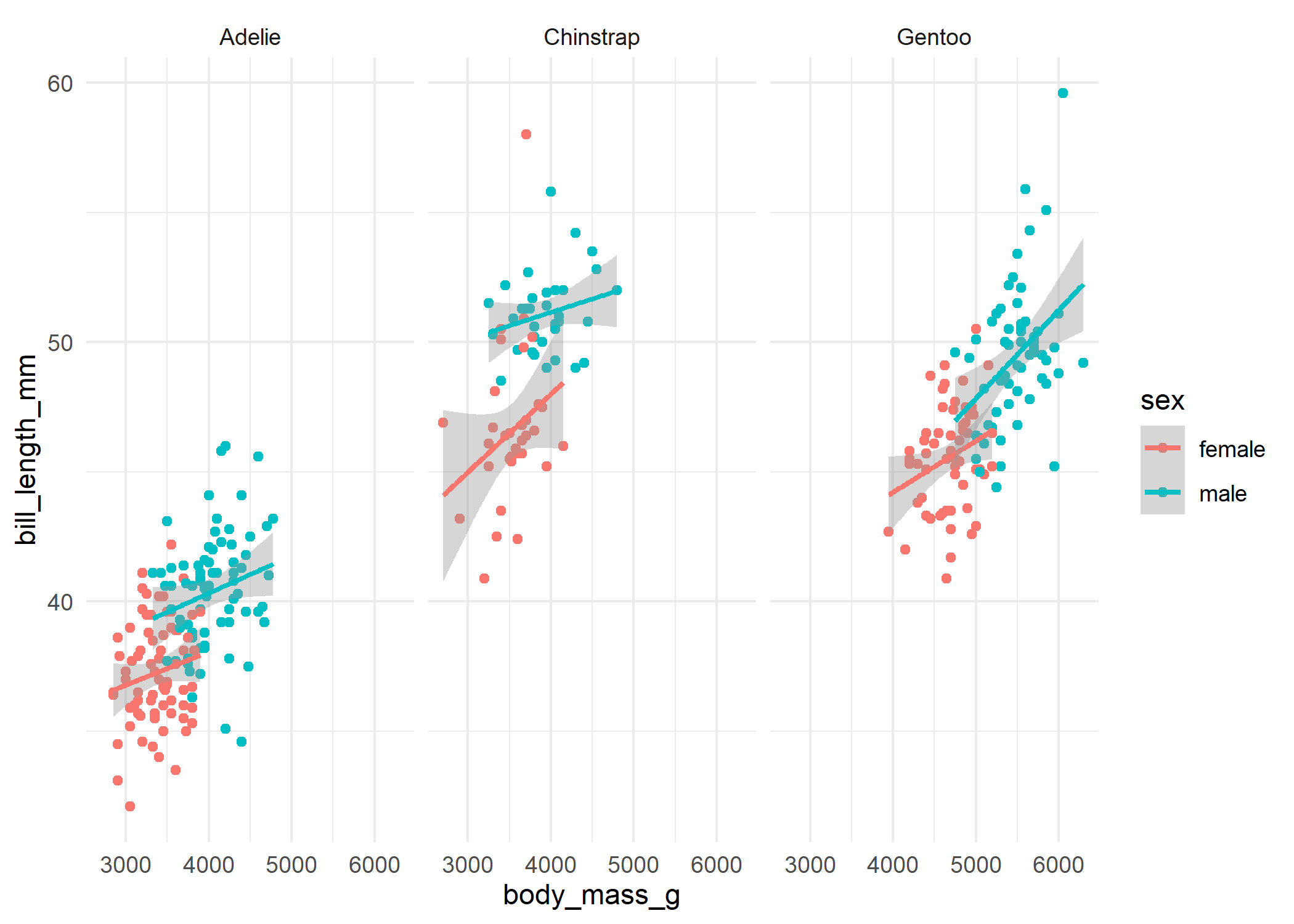ggreveal is an R package that makes it easy to present data on ggplot2 graphs incrementally. The functions in this package take a plot and break it down into a series of intermediary plots that can be shown in sequence (e.g. in different slides). Like this:

Why would you want to do that? Because it’s fun — and often very useful for teaching and giving talks.
Installation
install.packages("ggreveal")Usage
Create a graph with ggplot2 as usual.
library(palmerpenguins)
library(ggplot2)
library(ggreveal)
p <- ggplot(penguins[!is.na(penguins$sex),],
aes(body_mass_g, bill_length_mm,
group=sex, color=sex)) +
geom_point() +
geom_smooth(method="lm", formula = 'y ~ x', linewidth=1) +
facet_wrap(~species) +
theme_minimal()
p
Then use one of the reveal_* functions (e.g. reveal_groups(), reveal_layers(), reveal_aes()) to obtain a list of plots that show elements incrementally.
plot_list <- reveal_groups(p)
plot_list
#> [[1]]


You probably want to save these plots to include them later in a presentation. Use reveal_save():
reveal_save(plot_list, "myplot.png", width = 8, height = 4)Wait, can’t ggplot2 do this already?
Yes and no. ggplot2 is composable by design, so it is straightforward to do some incremental reveal out of the box. For example, you can create the plot in steps and save the steps separately:
data("mtcars")
p1 <- ggplot(mtcars,
aes(mpg, wt)) +
geom_point()
p2 <- p1 + geom_smooth(method="lm", formula="y~x") The problem is that, as you add layers and other elements, several visual aspects of the plot — e.g. range of axes, legends — can, and will often, change. Showing how the layout changes as you add elements is useful for teaching how to make graphs in ggplot2, but it is distracting when you want to focus on the results. Keeping the layout fixed is sometimes easy (e.g. setting the limits argument for the x/y scale), but in many cases it requires tinkering with the internals of the ggplot object.